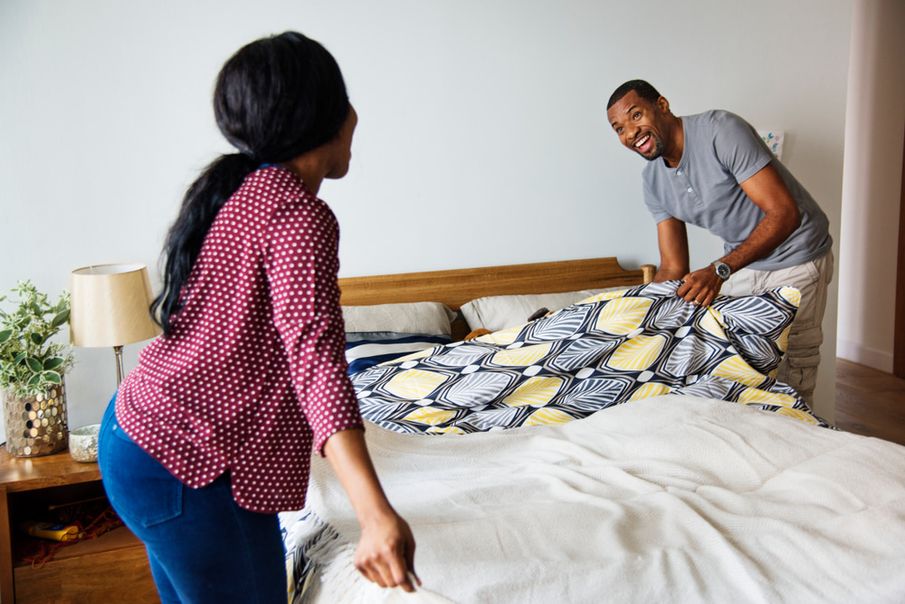A gendered divide in household chores is common knowledge for heterosexual couples but, now, new research has uncovered the details of who is likely to do what, and why
The messages have been sent to us across a lifetime: there are jobs for women, and there are jobs for men. We have seen it on our TV screens, in literature, and modelled in the relationships around us. And although relationships in 2023 are diverse, and many challenge these kinds of gender roles, new research from Aston University has found that traditional splits in household responsibilities are still at large.
The research, led by Dr Emily Christopher – a lecturer in sociology and policy, discovered that there were patterns and consistencies in what household tasks men and women chose to do. While so-called ‘woman-type tasks’ often involved multi-tasking, men’s tasks were more likely to include solo duties, such as mowing the lawn.
In order to study how the tasks are commonly divided, and whether attitudes towards their division have changed, Dr Christopher invited couples taking part in the research to assign ‘task cards’ during an interview in their homes. In the past, research has concluded that women are still doing the majority of the housework and, while Dr Christopher found some disparities, she also uncovered some familiar trends.
For example, tasks that required household management – such as remembering birthdays, organising presents, remembering children’s PE kits and money for cake sales, still tend to fall into ‘women’s tasks’. As Dr Christopher sees it, the difficulty here is that these tasks are ‘invisible’, and so are more likely to go unnoticed. Whereas, other, more ‘visible’ tasks such as ironing, cooking, washing up, loading the dishwasher, and hoovering were increasingly being picked up by men.
Speaking on the podcast ‘Society Matters’, Dr Christopher proposed that the jobs that men were more likely to do were tied up in meeting their own standards, or enjoying using technology. She also pointed to a culture around cooking, enhanced by the media.
“Men are more likely to do this now, arguably this might be because they are less likely to be seen as less masculine for doing so, this helped by the rise of celebrity chefs like Gordon Ramsay, Rick Stein, and Jamie Oliver,” she explained.
Considering the wider impact of the division in the tasks she uncovered, Dr Christopher highlighted the way that the tasks that men were more likely to be responsible for were less likely to interfere with paid work. On the other hand, the tasks taken by women often led to a reduction in their working hours – the implication being a furthering gender pay gap, restrictions in career progression and to pensions.
Inequality impacts relationships, negatively affecting both partners
“If you take maternity leave, it’s 12 months maximum in comparison to one or two weeks’ paternity leave,” Dr Christopher pointed out. “So straight away we are sending a message about who’s the natural carer. Parental leave needs to change to challenge this reinforcement of gender roles.”
Dr Christopher makes a call for better childcare provision, in order to level the way that chores and labour can be divided in a relationship. But are there smaller solutions you can look into immediately?
“Inequality impacts relationships, negatively affecting both partners. Despite this, it is extremely common, and tends to centre around the division of domestic responsibilities, childcare, and emotional labour,” wrote counsellor Hannah Beckett-Pratt in an article for Happiful on spotting and addressing inequality at home. “Relationships that lack this kind of equity can lead to stress, guilt, and dissatisfaction for both partners. It may be obvious that the partner who does most of the work is under-benefitting and prone to resentment, but research has also shown that the over-benefitting partner is often also dissatisfied; experiencing pity, guilt, and shame.”
If this is all sounding familiar, there are steps that you can take to begin addressing the balance, starting with beginning an open dialogue with your partner – and Hannah has many tips for approaching that conversation.
But, as Dr Christopher highlights, the issue is, in many ways, much larger than one individual couple. You may wish to learn more about campaign groups, such as Pregnant then Screwed – who campaign for better childcare provisions, as well as maternity rights – or The Childcare Levy UK.
It’s fair to say that many couples have come a long way in the past 50 years, but there’s still some distance to go. But using research like this to start conversations in our own homes is a step in the right direction.


Comments